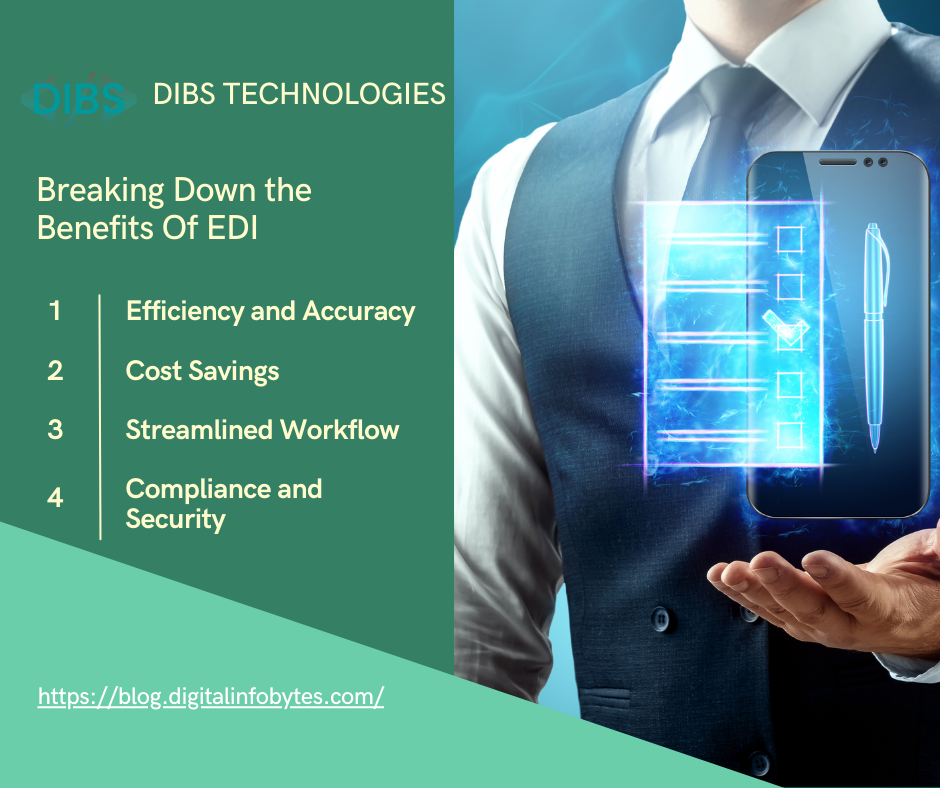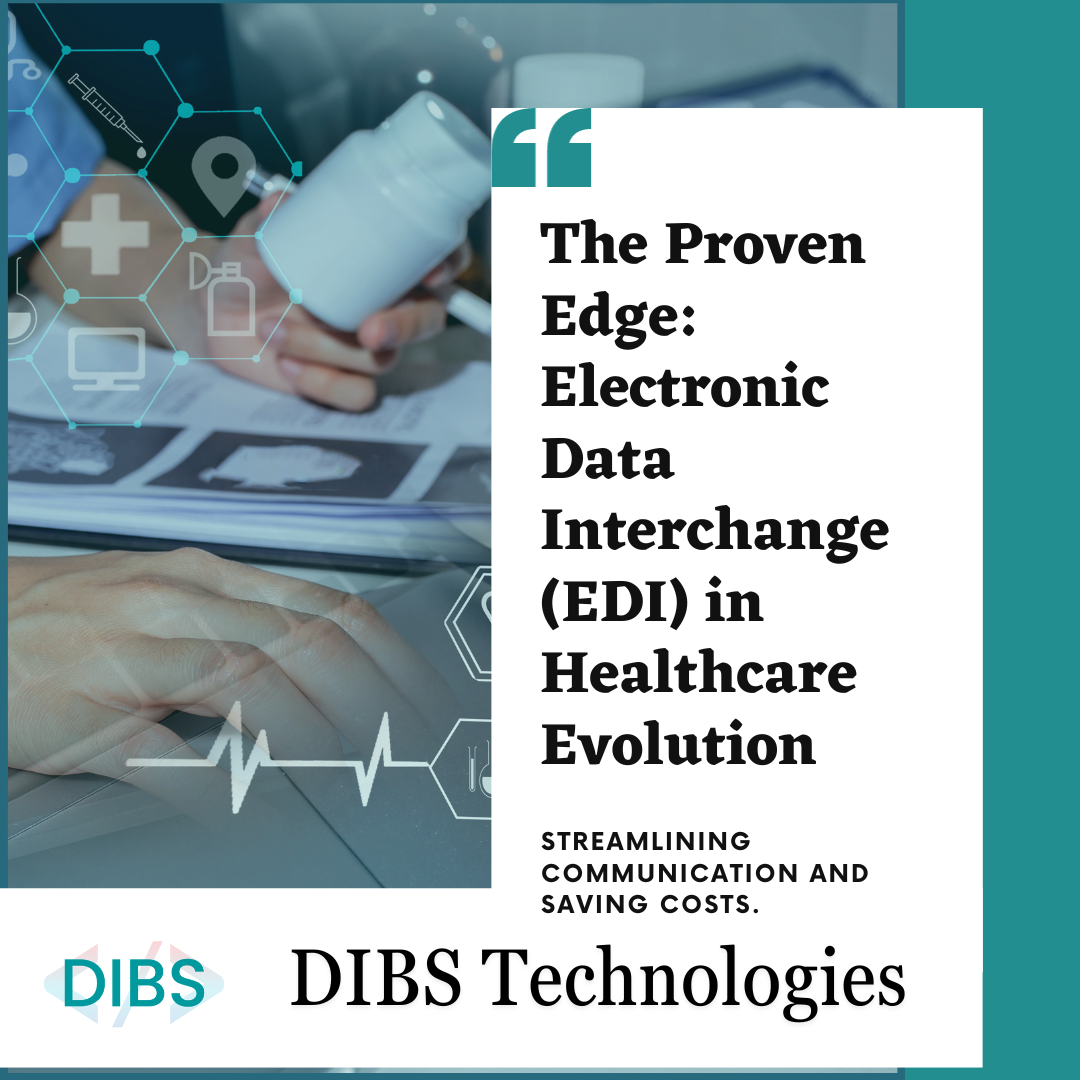The integration of technology has transformed the landscape of healthcare, be it the way of treatment, diagnosis, or data exchange. Electronic Data Interchange (EDI) has altered the way of exchanging data in the healthcare sector. The benefits of EDI are limitless, but it also has its challenges. In this blog post, we look into the significance of EDI in healthcare and explore its benefits, challenges, and impact on patient care.
Understanding Electronic Data Interchange (EDI)
At its core, EDI is a secured system that is used to exchange and transmit healthcare data within the organizations. Electronic Data Interchange follows a set standardized electronic format for the exchange of data, which makes it safe and secure. Communication within the medical industry has been revolutionized as paper-based communications are getting limited with the use of EDI. EDI enables seamless transmission of data between different healthcare institutes. From hospitals and clinics to insurance providers and pharmacies, EDI serves as the connection between the entire healthcare ecosystem.
Breaking Down the Benefits Of EDI
Efficiency and Accuracy
One of the primary advantages of Electronic Data Interchange in healthcare is the significant improvement in efficiency and accuracy. Manual data entry is prone to error, and the consequences of such errors in healthcare can be severe. EDI automates the process and reduces the likelihood of mistakes. Thus ensuring that the information is transmitted swiftly and accurately.
Cost Savings
Adopting Electronic Data Interchange helps healthcare organizations to save costs to a great extent. Organizations spend a lot on paper usage, postage, and manual labor for data exchange. Using EDI can reduce the use of these resources and direct them to better patient care and other critical areas. This also contributes to a more sustainable environment as less paper is consumed.
Streamlined Workflow
EDI has significantly helped in smoothening the workflow across various healthcare entities. The healthcare process has become much easier with the integration of Electronic Data interchange. From submitting insurance claims to processing prescriptions, EDI has made the entire process more fluid and interconnected. This not only improves the speed of operations but also enhances the overall patient experience.
Compliance and Security
In the healthcare industry, data security is a major concern for organizations, EDI follows a standard format for data transmission. The confidentiality and integrity of patient information are maintained as they restrict access to unauthorized individuals. The transmission protocols of EDI are as per the industry standards and adhere to the regulations. Thus, using EDI not only eases the healthcare process but also helps protect data privacy.

Overcoming Challenges
Electronic Data Interchange is a revolution in the healthcare sector as it has seamlessly transformed the entire processes. While the benefits are limitless, the implementation of EDI comes with certain challenges.
Interoperability
Maintaining a seamless operative connection between different healthcare systems has been a forever challenge. EDI requires all healthcare systems to adopt the technology for it to work efficiently. Connecting the healthcare entities over a single system can be difficult and the industry needs to work on it.
Initial Costs and Training
Implementation of the EDI system can be expensive at the start and acts as a challenge for smaller healthcare entities. Using EDI systems requires proper training and the cost of facilitating it can add to its expenses. However, it’s essential to view these as long-term investments that will ultimately result in cost savings and operational efficiency.
Resistance to Change
The comfort level with the traditional methods can act as a resistance for stakeholders and management of the organization to make a technological shift. This may result in inefficiency in using EDI for organizations as it challenges interoperability. Overcoming this resistance requires effective communication and education about the long-term benefits of EDI.
Transformative Impact on Patient Care
Faster Decision-Making
With Electronic Data Interchange, healthcare providers can access critical patient information swiftly. This helps healthcare providers to make fast decisions and provide timely interventions. This is particularly crucial in emergencies where every second counts.
Enhanced Coordination of Care
In the healthcare sector, the need to have a seamless data exchange network is quite important. With the integration of EDI in healthcare, the coordination of care among different healthcare providers has been enhanced. This results in a more holistic approach to patient’s health regarding diagnoses, treatments, and medications.
Patient Empowerment
EDI empowers patients by providing them with easier access to their health information. Patients can actively take part in their health journey. EDI facilitates them to schedule appointments or view test results from the comfort of their home. Thus, leading to an improved healthcare experience.
The Future of Healthcare: A Digital Ecosystem
The integration of Electronic Data Exchange has proved its worth over time and is ascertained to expand further. With the evolution in technology such as artificial intelligence and machine learning, the EDI system is getting better. Blockchain technology will increase security and transparency in EDI transactions, reducing fraud risks and ensuring data integrity. Integrating the Internet of Things (IoT) will enable data exchange between physical and digital systems. Advancements in Natural Language Processing will simplify EDI implementations, making it accessible for healthcare centers of all sizes. Thus, resulting in greater efficiency, security, and innovation in healthcare data exchange.
Conclusion
Electronic Data Interchange has transformed the working of the healthcare sector for good. Data exchange has become seamless, enhancing operational efficiency among healthcare institutes. EDI has also benefited patients by improving healthcare delivery and reducing the burden of handling paper documents. As healthcare organizations continue to embrace digital solutions, the improving EDI system will improve. Thus, leading to a future where healthcare delivery will be patient-centric and data-driven.
Talk to our experts to learn more about the advancements in the Electronic Data Interchange system. Find out how the DIBS team can help you in building a customized EDI system based on the needs of your organization.







Leave a Comment